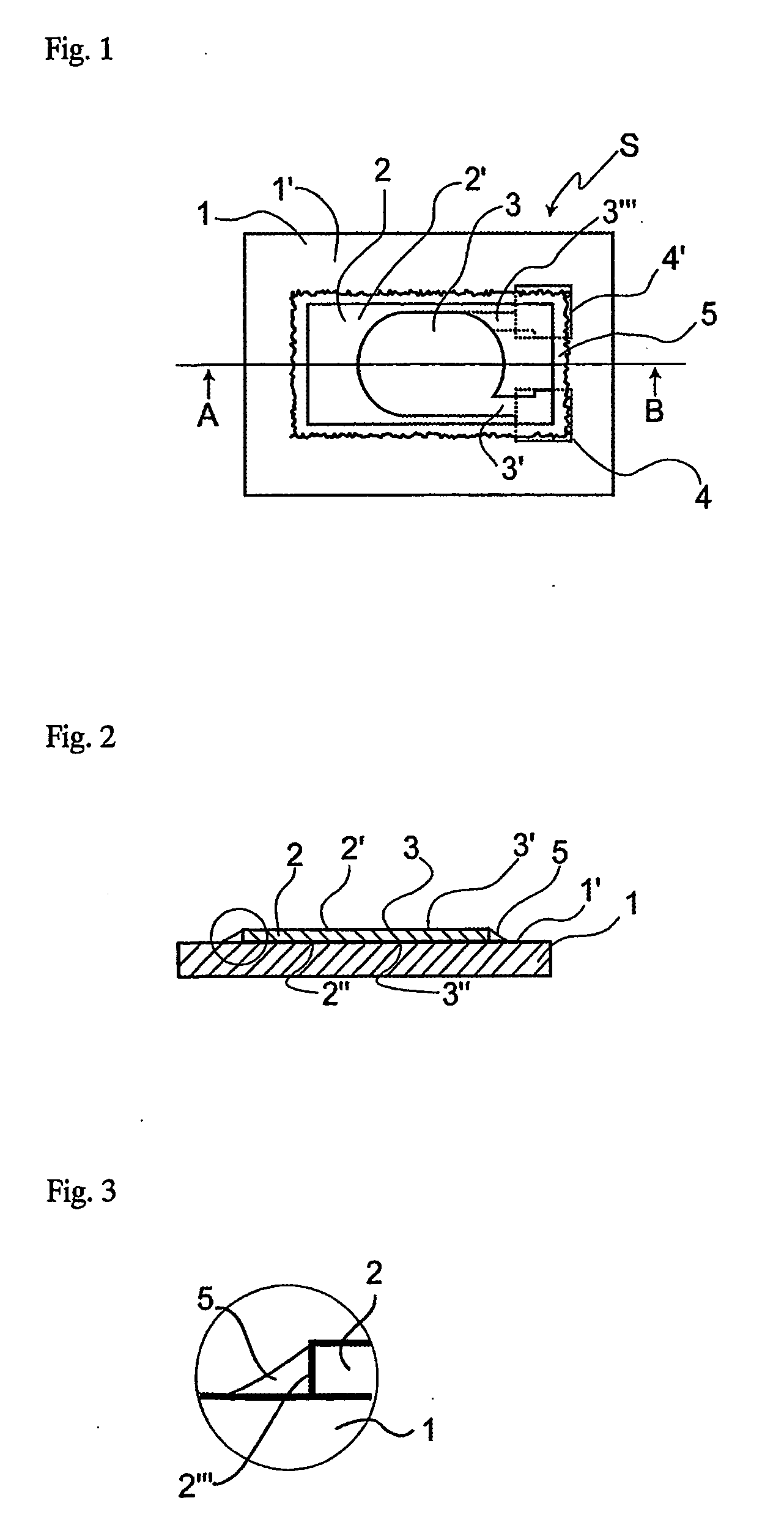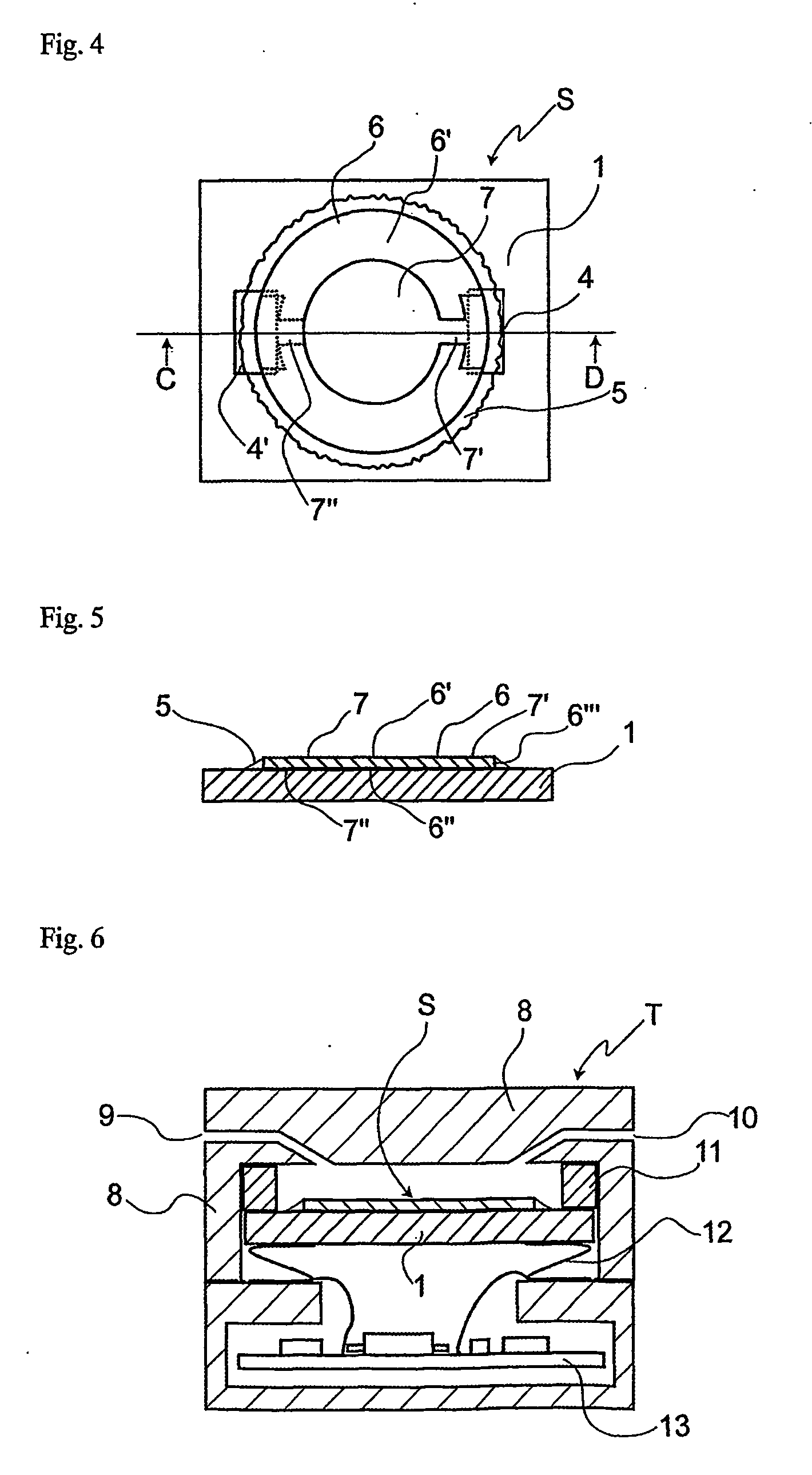Chip quartz oscillator and liquid-phase sensor
- Summary
- Abstract
- Description
- Claims
- Application Information
AI Technical Summary
Benefits of technology
Problems solved by technology
Method used
Image
Examples
first embodiment
[0050] FIG. 1 is a plan view from above schematically showing the chip quartz oscillator of the present invention, and FIG. 2 is a sectional view along the line A-B indicated in FIG. 1. In these figures, the chip quartz oscillator S has a rectangular quartz oscillator 2 placed on the upper surface 1' of a substrate 1. Substrate 1 is made of any material which is rigid, non-conducting or able to retain a non-conducting coating, non-soluble in the liquids being tested and preferably inexpensive and easy to work with. Many engineering plastics, metals and ceramics are suitable for this use, in particular the types used for making circuit boards. The quartz oscillator 2 has a detection electrode 3 on a first surface 2' and a non-detection electrode 3" on the opposite second surface 2" i.e. in this case the side facing towards the upper surface 1' of the substrate 1. In an example of an embodiment of the present invention the quartz oscillator 2 is in the order of 4 mm long, 1.6 mm wide ...
second embodiment
[0067] Several application examples will be described here in regard to the chip quartz oscillator S of the present invention. FIG. 6 is a sectional view showing an example of a flow-type liquid-phase quartz oscillator sensor using a chip quartz oscillator S of the first or second embodiment described by referring to FIGS. 1-5. An inflow entrance 9 and a drain hole 10 are arranged in the vessel 8, to enable a sample solution to enter the vessel and come into contact with the detection electrode of the chip quartz oscillator S inside-the flow-type liquid-phase quartz oscillator sensor T. The substrate of the chip quartz oscillator S is fixed between cushioning material 11, such as an elastic body such as an O-ring or a flexible gasket, and a preferably elastic electric junction 12, such as an elastic metal such as flat spring or dampening pin. The cushioning material 11 is used to preventing the sample solution from flowing into the region around the rear side of the substrate of the...
PUM
 Login to View More
Login to View More Abstract
Description
Claims
Application Information
 Login to View More
Login to View More - R&D
- Intellectual Property
- Life Sciences
- Materials
- Tech Scout
- Unparalleled Data Quality
- Higher Quality Content
- 60% Fewer Hallucinations
Browse by: Latest US Patents, China's latest patents, Technical Efficacy Thesaurus, Application Domain, Technology Topic, Popular Technical Reports.
© 2025 PatSnap. All rights reserved.Legal|Privacy policy|Modern Slavery Act Transparency Statement|Sitemap|About US| Contact US: help@patsnap.com



